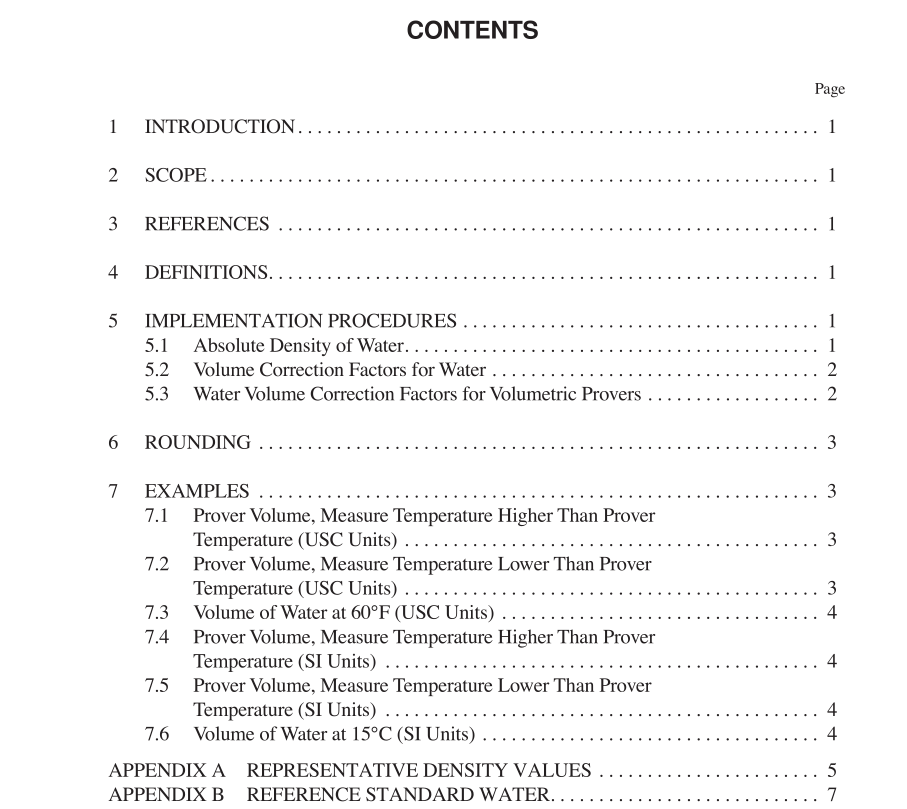API MPMS 11.4.1 pdf download

API MPMS 11.4.1 pdf download.Manual of Petroleum Measurement Standards Chapter 11—Physical Properties Data
4 Definitions
4.1 density, absolute: The density of a solid or liquid substance at a speciÞed temperature is the mass of the sub- stance occupying a unit of volume at the speciÞed tempera- ture. Density so deÞned is sometimes referred to as Òtrue densityÓ or as Òdensity in vacuo.Ó When reporting density, the units of mass and volume used and the temperature of the determination must be stated (for example, grams per millili- ter at 15¡C). Density is assumed to be for water at atmo- spheric pressure unless otherwise stated. 4.2 volume correction factor (VCF): The density of a liquid at temperature t divided by its density at a chosen ref- erence temperature. Multiplying a liquidÕs volume mea- sured at temperature t by the VCF provides the volume of the liquid at the chosen reference temperature. Volume Cor- rection Factors are assumed to be for water at atmospheric pressure unless otherwise stated. Certain API MPMS Chap- ters call this factor CTDW.
5 Implementation Procedures
The implementation procedures below are the standard. Representative density values are presented in the Appendix A for programming veriÞcation purposes only. 5.1 ABSOLUTE DENSITY OF WATER The previous standard (API MPMS 11.2.3, 1984), which this Standard replaces, was based on the internationally accepted work of Wagenbreth and Blanke, which produced a density of 999.012 kg/m 3 at 60¡F. In 1994, Patterson and Morris published a paper proposing a new equation based on their laboratory data of VSMOW (see Appendix B), which was accepted by the NIST (National Institute of Standards and Technology). In 2001, a review (Tanaka, et al. ) proposed a new equation regressed from the data of several researchers (including that of Patterson and Morris). Although they are aware of this paper, the NIST at this writing has chosen to continue to accept the work of Patterson and Morris. This Standard is therefore based on that same work, applicable between 1¡C and 40¡C (see Appendix C). The following equation expresses the density of water as a function of temperature in degrees Celsius:
6 Rounding
In many cases the number of decimal places that are to be used is inßuenced by the source of the data itself. For exam- ple, if a containerÕs capacity table is calibrated to the nearest whole barrel, then all subsequent barrel values should be rounded accordingly. Furthermore, calculation standards such as MPMS Chapter 12 will specify rounding for each unique application. However, in those cases where there are no other limiting factors, the operator should be guided by Table 1. Each calculated density shall always be rounded off in one step to three places past the decimal and not rounded in two or more successive steps. Water Volume Correction Factors are rounded to six places past the decimal. When the Þgure to the right of the last place to be retained is less than 5, the Þg- ure in the last place retained should be unchanged.
7 Examples
The following examples are for illustration purposes only. The relevant API MPMS chapters (4.9.2, 12.2.4, etc.) govern use and rounding for speciÞc applications. 7.1 PROVER VOLUME, MEASURE TEMPERATURE HIGHER THAN PROVER TEMPERATURE (USC UNITS) Problem: During a waterdraw, the water in a prover at 80.7¡F is transferred into a test measure volume of 11,551.50 cubic in. at 83.0¡F. What is the volume of the prover at 80









